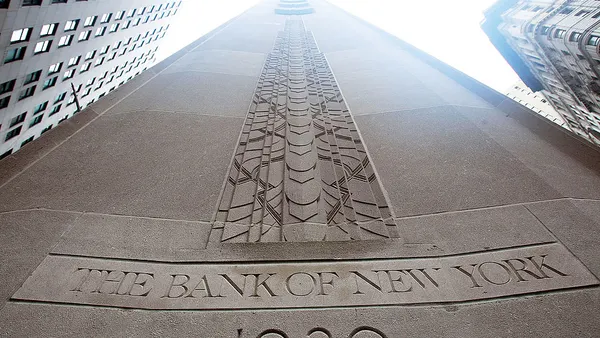The Federal Reserve, Federal Deposit Insurance Corp., Office of the Comptroller of the Currency, and National Credit Union Administration asked financial institutions Thursday to include short-term accommodations for creditworthy borrowers in the commercial real estate market.
Guidance issued Thursday, updated from 2009, asked banks and credit unions “to work prudently and constructively with creditworthy borrowers during times of financial stress.”
Financial institutions should step in with short-term accommodations before a loan reaches a workout scenario, the regulators wrote in a statement.
“These actions can mitigate long-term adverse effects on borrowers by allowing them to address the issues affecting repayment ability and are often in the best interest of financial institutions and their borrowers,” the regulators said.
Short-term loan accommodations — which include deferring payments, making a partial payment or modifying a loan — are effective ways to help distressed borrowers before more significant measures become necessary.
The statement also highlights recent accounting changes for estimating loan losses and gives examples of classifying and accounting for loans affected by the workout process.
The guidance incorporated feedback from comments the agencies requested in October.
The finalized guidelines are similar to a policy proposed more than a decade ago. The final statement addressed supervisory expectations of banks’ dealing with loan accommodation and workout matters, including risk management, loan classification, regulatory reporting, and accounting considerations.
The final statement also includes updated references to supervisory guidance and revised language incorporating current industry terminology.
The final statement reaffirms two critical principles: financial institutions that implement the CRE loan accommodation and workout arrangements won’t be criticized for engaging in these efforts. Similarly, modified loans to borrowers who could repay their debts according to reasonable terms would not be adversely classified due to the underlying collateral.
The banks will have to square up negotiations since roughly $400 billion of debt on commercial real estate matures this year, Bloomberg reported. The amount of distressed property assets surged to nearly $64 billion in the first quarter of 2023, according to MSCI Real Assets.
Though the updated guidelines for distressed commercial real estate loans have been impending for many years, the process gained momentum owing to rising interest rates and falling occupancy rates, especially for central business district offices, according to American Banker.
The issue tends to be more acute for smaller and midsize banks since they have higher concentrations of commercial real estate debt on their balance sheets. Global Commercial Real Estate Services, a property advisory firm suggested that over 300 banks in these size categories have enough commercial real estate loans on their books to wipe out their Tier 1 capital, American Banker reported.
Though large banks also have significant real estate exposure, it is not as concentrated as with smaller and midsize ones.
In its stress test report published Wednesday, the Fed found all 23 participating banks remained above their minimum capital requirements under a scenario that featured a severe plunge in real estate markets.













